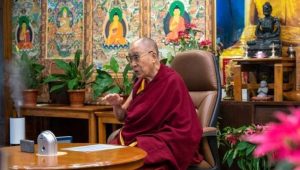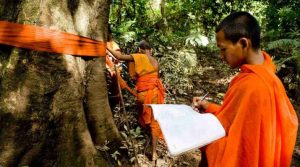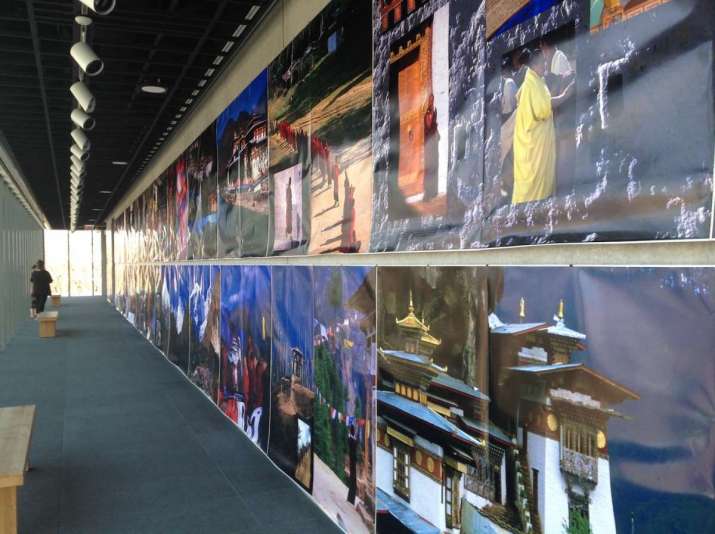
In 2003, the non-profit organization Friendly Planet published a very large book, measuring five feet by seven feet, and featuring photos of the very small Himalayan kingdom of Bhutan, about the size of Switzerland. MIT professor Michael Hawley led a team from Friendly Planet and a small army of Bhutanese students over four trips to Bhutan to document the country on a spree that involved mules, helicopters, SUVs, and walking. Road trip!
The result was a really huge, really expensive book. There have been other really huge books since then, notably a book of Tibetan murals by Thomas Laird.* If you wished to invest in such an objet, you could have bought a copy. Universities have bought copies, for example.
When huge books are exhibited—such as at an art fair—the huge book itself is displayed on a table or stand and, when it is not occupied, you can flip through the pages as you choose. It’s possible to have a real experience with the book. At museums, books, like long scrolls, are opened to specific pages and placed out of reach behind protective glass. In libraries, you can enjoy the book over a large table, and again, truly take in the experience.
There is another way. Someone with a copy of the huge book,Bhutan, A Visual Odyssey Across the Last Himalayan Kingdom, allowed it to be completely taken apart so that it could be displayed to the public in toto at Wrightwood 659 in Chicago—a revolutionary high-concept space designed by Japanese minimalist master Tadao Ando.
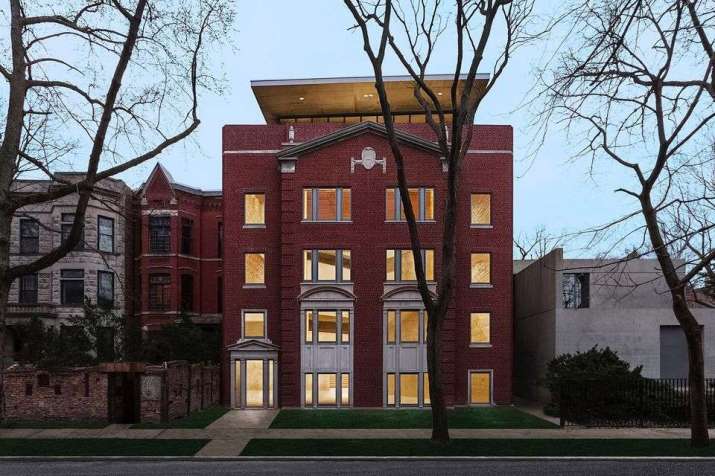
It wasconceived for thepresentation of exhibitions devoted to architectureand to socially engaged art.It is a complete gutting and rebuilding of a Chicago Lincoln Park townhouse, opened in 2018, featuring Traces, an intelligent, progressive, and thoughtful exhibition by Chinese activist-artist Ai Wei Wei. When Tadao Ando meets Ai Wei Wei in an exhibition space, the alchemy produces a heady aesthetic, sublime in a way. Wrigthwood 659, and the Alphawood Foundation that supports the exhibitions, are Chicago at its best.
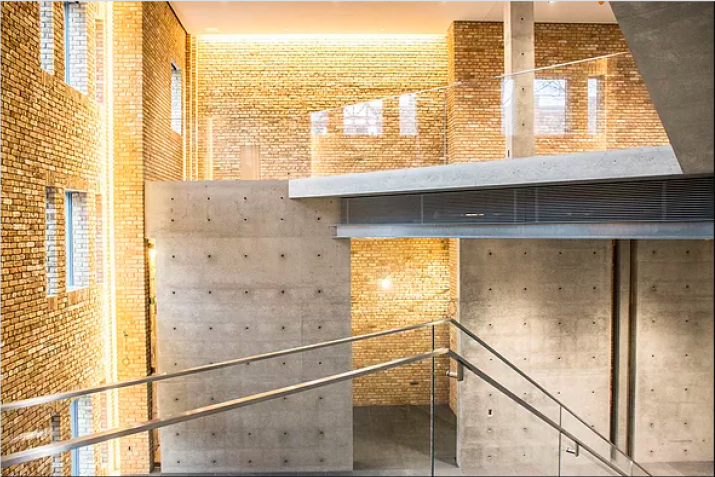
The building itself is an experience. The masterful exhibitions within it reflect the high-minded intentions and the curatorial skills to communicate complex and overlapping aspects of architecture and society. The current exhibition was the official United States entry at last year’s 16th International Architecture Exhibition of the Venice Biennale, seen in the US for the first time at 659. A collaborative creative effort, there are four curators featuring seven participants, including design firms, architecture firms, and creative developers. Dimensions of Citizenship: Architecture and Belonging from the Body to the Cosmos brings together the notion of citizenship from migration to the meaning of public space.
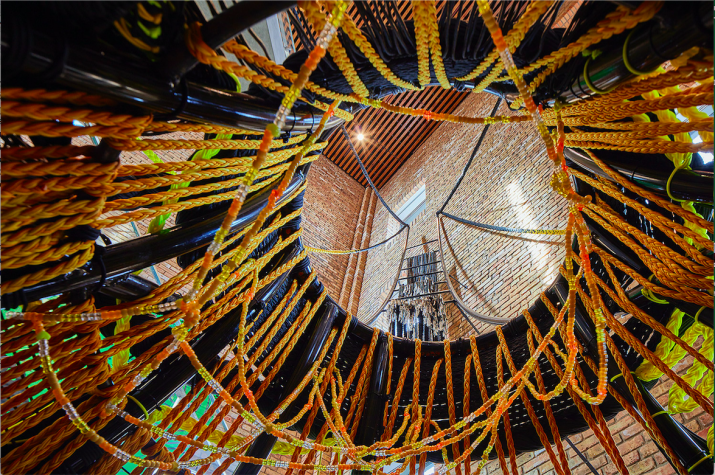
This is all rich and timely and world class; a contemplation for our times even as the nature of conceptual exhibitions evolves before us. And then, a surprise on the fourth floor: unannounced, but inescapable, is a copy of the huge Bhutan book, disassembled. Having been printed accordion-style, the images are on one side only once the book is taken apart. As the makers of the book are fond to remind us: “It is longer than a football field! Each copy uses a gallon of ink!” That’s a lot of book.
This is not a one-at-a-time huge book viewing, it’s the whole book, all at once, for everyone. Rather than the book’s pages turning, you walk around the sun-lit terrace. The fourth floor of 659 is a walk-around terrace, open on three sides to the air and light. They become corridors of reflection, especially after visiting the main exhibition on Citizenship. How unexpected, a rough-and-tumble ride though the Himalaya. Everyone is so happy, and life size too.
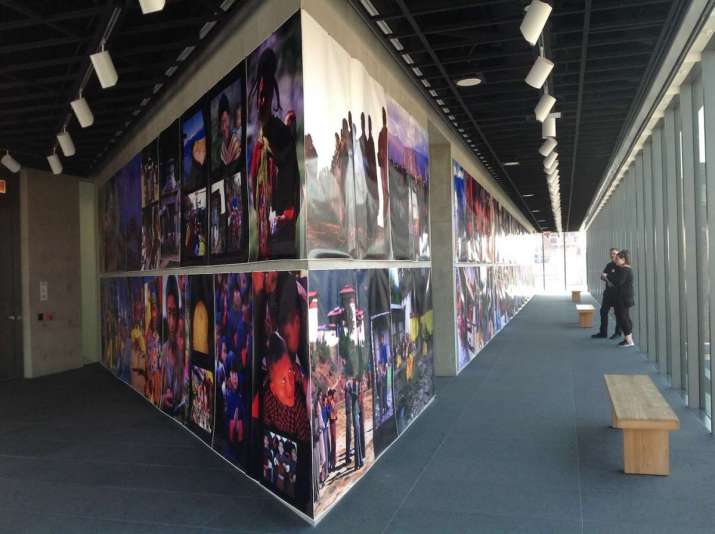
Clearly this book has been used a lot, and the use is evident. The pages are wrinkled, adding a texture, and more than that, appearing like a path worn by eager pilgrims. The display accentuates this, celebrates it, rather than smoothing everything out. This is not a fashion book, nor an architecture book, nor a dance book. It is not glamorous. It is like something captured on the run; an odyssey as the title says. It is a series of encounters with the unknown. The sense of the photographers traveling though is palpable. The range of their skill reflects a range of perceptions, like real life.
The imagination delights to imagine a team lead by a specialist from one of the world’s top universities, joined by Bhutanese students, some of whom had never seen their own photo before this project, all held together by the uplifting mission of Friendly Planet.
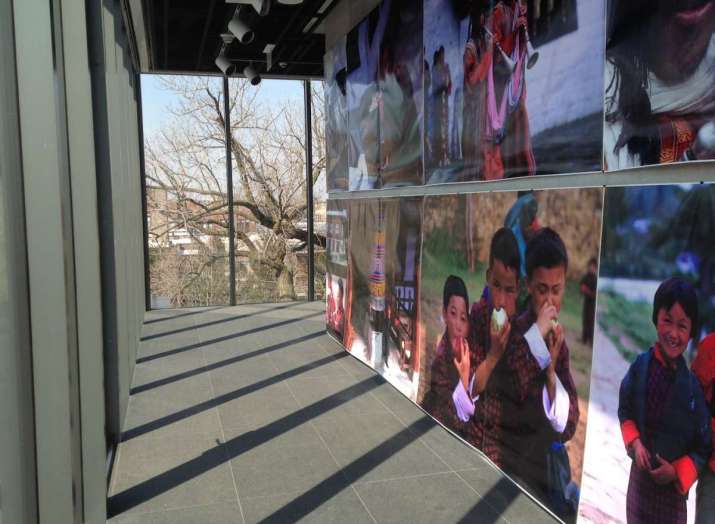
Having lived in Bhutan for five years, I recognized the Bhutan shown here: scrappy, unceasing, welcoming, innocent; a little rough around the edges. It is very much what traveling through Bhutan is like. You cannot tell what everything is. Some things are out of focus and go by too fast. Nature is vast and the people are humble. It is the everyday of a far-off place. Citizenship brought home way up high.
Bhutan is frequently portrayed in idealistic ways as it surely deserves to be, and we have seen a lot of the Shangri-la Bhutan. This photographic journey through landscapes of Bhutanese citizens makes you want to share a meal with the people you see; laugh, and tell a story. It is at once unpretentious and exotic.
If you are a citizen of Bhutan, you belong to a constitutional monarchy that places high emphasis on the notion of Gross National Happiness, a spiritual gloss on Gross National Product. Traditional culture, sacred dance, and ecological purity are enshrined in the Bhutanese constitution.
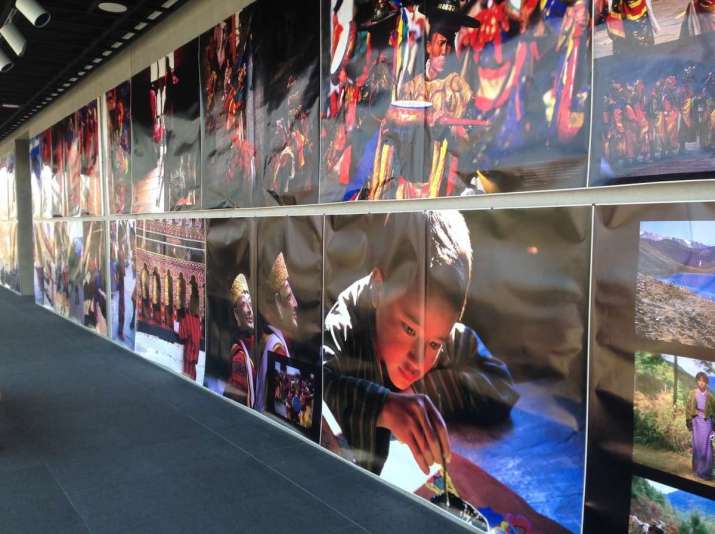
Having seen the fates of the monarchs of China, Tibet, and Nepal, the fourth king of Bhutan boldly and elegantly moved to transform his kingdom into a modern nation, and democracy was the chosen model of government. Again, the fourth king’s perspicacious review of world democracies taught him that neither American- nor Indian-style democracy, nor Israeli, nor British were appropriate for Bhutan, as it chooses to uphold its high cultural values through its system of governance. So what was obvious came to be, Bhutan is a constitutional monarchy and a Buddhist democracy.
At the top of Wrightwood 659, bathed in light, Bhutan, longer than a football field, is displayed with the folksy majesty of the AIDS quilt. After being stimulated and challenged, over three floors, by thoughts and images of citizenship from sophisticated thinkers and ingenious designers, one comes to the huge Bhutan display: outsized rumpled paper in the chic concrete palace of design. It is perhaps most powerful as a great inchoate symbol of a way of life. Low-tech, like prayer flags battered by the elements, modern sophistication confronts the plain picture of what citizens look like, who shape their system according to compassionate values.
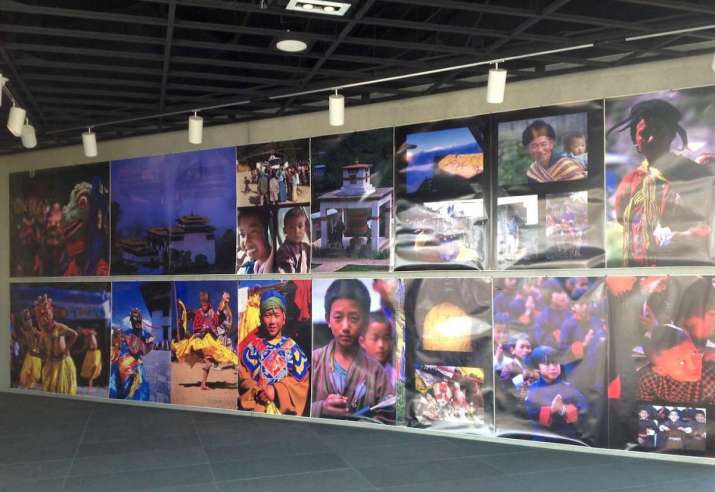
Everyday Bhutanese; citizens of a modern nation, a Buddhist democracy, deserve to be part of a conversation on contemporary citizenship. Surprising, featuring unknown and untrained photographers, yet providing inspiration for social engagement, this unadvertised, little explained, huge book taken apart, is an embodiment of the deft elegance that characterizes Wrightwood 659; one that leaves visitors more thoughtful than when they arrived.
* New Book, Signed by the Dalai Lama, Offers a Unique Glimpse of Rare Buddhist Murals from Tibet (Buddhistdoor Global)
See more








